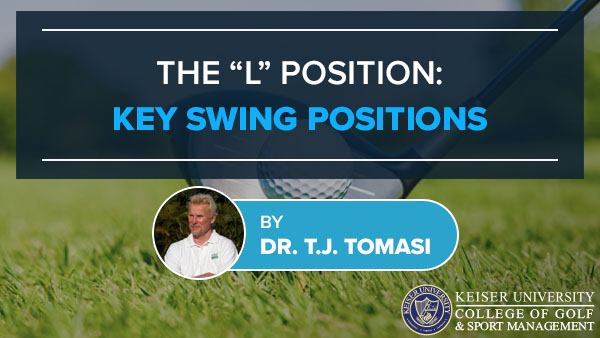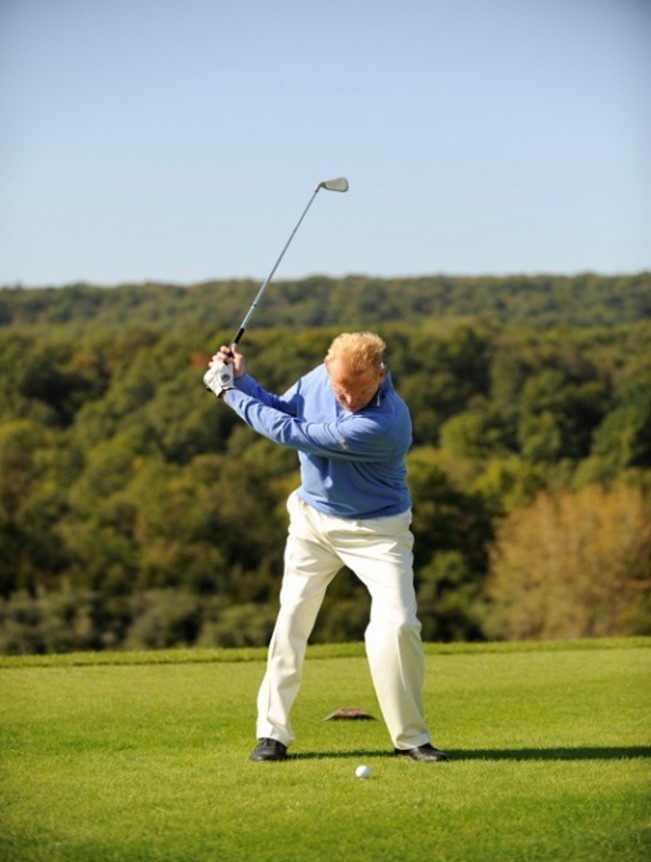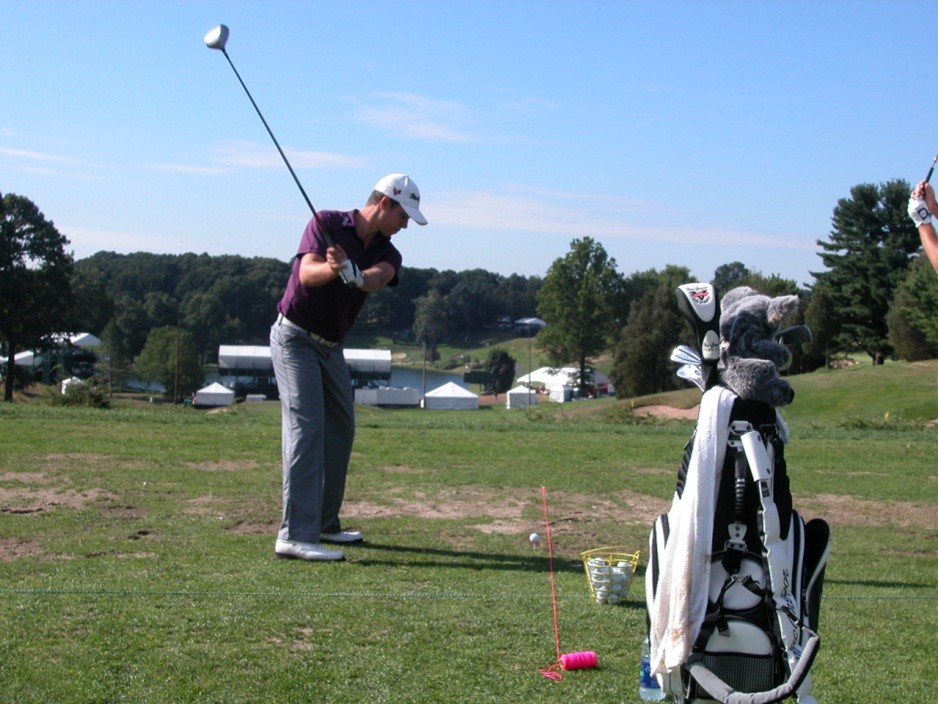The “L” Position: Key Swing Positions

By Dr. T. J. Tomasi, Keiser University College of Golf Senior Faculty and Director of Research
This is another article in the series on key swing positions that allow you to match your swing to the swing model at key points to see how it stacks up. The model assumes a right-handed golfer hitting a straight shot.
The Position
When your lead arm is parallel with the ground and across the middle of your chest, you have reached the key swing position that occurs just after the takeaway is completed. As you can see by the photo, the arm forms an L with the shaft.


Here your head has swiveled slightly but remains in the center of the shoulders. The shoulders have rotated and tilted a bit as a result of the tug of your lead arm. The lead arm itself is straight (not stiff) and parallel with your heel line (not toe line), while the trail elbow has folded into a 90-degree angle. Your left wrist is flat (in line with your forearm) and cocked at a 90-degree angle.
In this key position, you must accomplish three important to-do’s:
- For the right-handed golfer, the wrists are fully cocked, with the left wrist cocking (up/down) and the right wrist hinging (back/forth).
- With the fold of the trail elbow, the right-side angles are in place.
- The club is on the correct swing plane when the shaft points at the target line (not the ball).
The controlling thought in this position is to correctly set the wrists so that the club remains on the plane (see photo). Here the wrists set the club up while the body rotates the club around into the depth dimension (behind you).
Concept Expansion
“Swing plane” is a general term used to describe the overall tilt of the overall arc of your swing. The plane changes with the club, in part because of the different lengths of the shafts. For example, nine-irons are swung on a more vertical arc giving the feeling of up/down, while drivers, one of the longest clubs, swing more around you on the flattest arc giving the sense of ‘roundness.”

Takeaway
With all that’s beginning to happen, you can see the importance of this key position even though it occurs early in your swing – and that a mistake here can create an L of a problem that fouls your impact position.
Thus, as with the other key positions, take some time to work on this position in the mirror until you match the model without even thinking about it.
Learn more!
Want more tips? If you want to take your game to the next level, contact our team at Keiser University’s College of Golf & Sport Management today. With our dedication and experience, together, we can elevate your game to new heights. Give us a call today at 888-355-4465.














